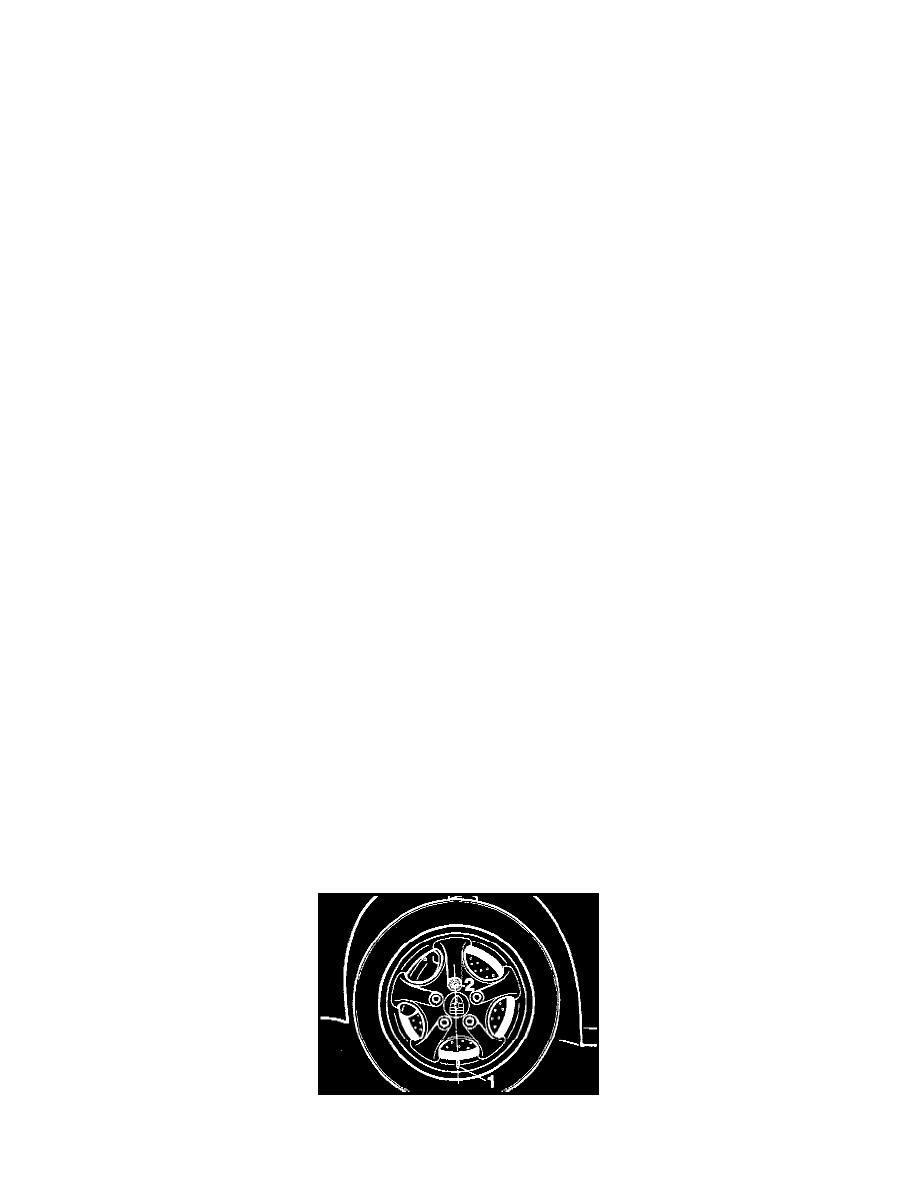911 Turbo AWD F6-3600cc 36L SOHC Twin Turbo (1997) Maintenance: Wheels and Tires

Tires: Service and Repair
Optimizing Tire and Wheel to Vehicle
Preliminary
The entire process is subdivided into four operations.
1. Mounting the tire on the rim.
2. Stationary balancing of the wheel (eliminating the static and dynamic imbalance) with optimization of the rolling smoothness.
3. Mounting the wheel on the vehicle.
4. Electronic fine balancing (static balancing) of the wheel on the vehicle (after stationary balancing if necessary/not required in most cases).
Step 1: (Mounting The Tire On The Rim)
-
Remove rubber residues and dried-on tire paste from the rim, especially from the rim bead and the hump.
-
Examine rim for damage; remove old balancing weights.
-
Use the prescribed tire mounting paste so that the tire does not turn on the rim the first time the car is driven, thereby destroying all of the careful
work (refer to General Instructions).
If the tire turns by as little as 20 mm with respect to the rim, this can worsen an optimum balancing result.
-
Mount tire on the rim.
When doing so, it is expedient (and necessary in individual cases) to mount the tire in a favorable position with respect to the wheel
(matching).
Controlled or uncontrolled matching is described in General Instructions.
-
Fill tires to a pressure of approx. 3 bar.
At the latest when the pressure reaches 3.75 bar, the tire beads must pop out of the deep bed and over the hump of the rim bead in order to
avoid fractures of the bead core.
If necessary, interrupt the process and generously coat all necessary surfaces with lubricant (tire mounting paste) again.
Then repeat the process.
-
Check the fit of the tire on the rim by means of the bead centering line.
-
Set the prescribed tire pressure. See: Specifications/Pressure, Vacuum and Temperature Specifications
Step 2: (Stationary Balancing With Optimization Of The Rolling Smoothness)
-
Clamp wheel on stationary balancing machine, observing the following important points:
a) Observe the operating instructions of the balancing machine; occasionally adjust the machine if necessary.
b) The support surfaces of the wheel on the balancing flange (leveling surface) and the centering surface must be clean.
c) Centre (clamp) the wheel from the inside with centering clamping device. This centering clamping device fits on all wheel balancing machines
approved by Porsche.
-
Check radial and axial runout during the 1st measuring run.
Values less than 1.0 mm (better around 0.5 mm) are desirable.
-
Consider the size of the measured balancing weights and their distribution on the inner and outer planes (inner and outer rim flanges) critically.
A uniform distribution with low values (e.g. 25/30 g) means that the tire was mounted correctly and the quality of the tire and rim is good.
A value of 60/60 g (80/80 g in the case of wheels with balancing weights affixed on the inside) should not be exceeded.
A greatly different distribution, e.g. 30/70 g is very unfavorable; this usually indicates incorrect mounting.
Problem wheels of this kind often have pronounced radial and axial runout values.
Remedy by "matching" (use the correct tire mounting paste
a) manual improvement possible
b) with the rolling smoothness optimization programme - significant improvement is possible in almost all cases.
The tire pressure must not be less than 1.5 bar overpressure during balancing.
Permissible residual imbalance less than 3 g, or max. 3 g per plane.
Step 3: (Mounting The Wheel On The Vehicle)
-
Fasten wheel on wheel hub according to the specifications.
Up to September 1995:
